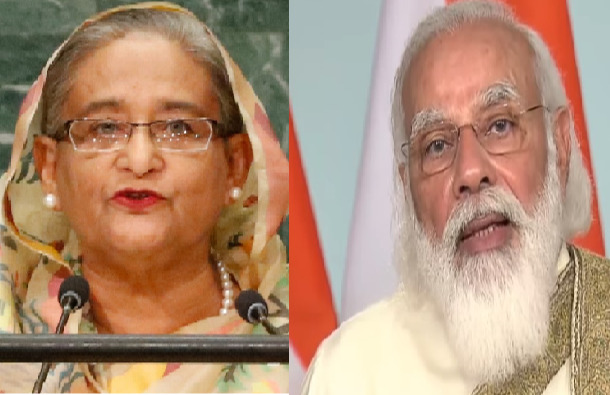
Prime Minister Narendra Modi will make an overnight visit to Bangladesh on March 26 to join the neighbouring country’s celebrations marking the 50th anniversary of its freedom in 1971.
The two-day trip to Dhaka will be PM Modi’s first foreign visit in 15 months and is seen to reflect New Delhi’s emphasis on its ties with Bangladesh which the PM has described as “an important pillar” of India's ‘neighbourhood first’ policy. The two countries have already signed seven agreements in areas ranging from hydrocarbons to agriculture at the Modi-Hasina summit in December.
There are no big-ticket agreements planned during the visit.
“No unresolved bilateral issues between Bangladesh and India will be discussed during Narendra Modi's visit to Dhaka. We are happy that he is coming. It shows the height of diplomatic maturity and achievement,” said foreign minister of Bangladesh AK Abdul Momen.
Underlining the rock-solid relationship of Bangladesh and India, Momen said that as neighbours, leadership of both the countries has great maturity. Bangladesh and India are resolving all the difficult and critical issues amicably through dialogue and discussion. But this visit is to celebrate the ‘special bond’.
Visit to Hindu shrines
Modi is expected to visit a sacred shrine of “Matua'' community at Orakandi in Gopalganj district and a ‘Satipith’ in Shikarpur in Barishal district, reported Bangladesh Sangbad Sangstha, the country’s national news agency. The shrine at Orakandi is the most sacred pilgrimage centre for the ‘Matua’ community, a Hindu sect born out of a reformist movement around 1860 by Harichand Thakur. After that, Modi will address representatives of the “Matua” community.
On the same day, Modi is also expected to visit the Shikarpur temple, dedicated to goddess Sunanda, an incarnation or avatar of goddess Durga.
The reports in Bangladesh media also suggest that Modi expressed his desire to visit the ancestral home of freedom fighter Bagha Jatin and Rabindra Kuthi Bari, a country house built by Dwarkanath Tagore, father of poet Rabindranath Tagore in Kushtia. The poet lived a part of his life there.
The March 26, 2021 summit will be the fifth bilateral meeting between the two prime ministers after the meetings in 2015, 2017, 2019 and 2020.
This special bond between the two countries was evident on December 17 when in the virtual meeting between Prime Minister Narendra Modi and his Bangladesh counterpart, Prime Minister Sheikh Hasina, a day after the Victory Day celebration (16 December) marking the day Bangladesh attained victory over Pakistani forces in the 1971 Liberation War. This is a shared heritage between the two countries as Indian forces supported Bangladeshi during the war for independence.
Indian officials said the visit comes at a time, when there was tremendous goodwill for the Indian government and its people in Bangladesh on account of New Delhi going the extra mile to make the coronavirus vaccine available to the neighbouring country.
New Delhi has supplied 9 million doses of Covid vaccine to Dhaka including 2 million doses as a gift from the people of India. The remaining 7 million doses were sent on a commercial basis after Bangladesh decided to rely on the Indian vaccines rather than the vaccine pushed by China.
Ahead of his visit, PM Modi inaugurated ‘Maitri Bridge’ (India-Bangladesh Friendship Bridge) making Tripura the ‘Gateway of Northeast’, with the Chittagong Port located 80 km from the new integrated check post in Sabroom.
Bangladesh Prime Minister Sheikh Hasina said: “We are creating a new era in South Asia by providing connectivity to India.”
While India and Bangladesh are jointly upping the game when it comes to building deeper connectivity in the region, the role played by Japan adds a significant dimension. Both the countries are now basically making an effort to revive the infrastructure that existed in the 1960s and “correcting a gap.” The push will connect the entire landlocked northeast region of India with the Indo-Pacific and the rest of the world. The growing connectivity between India and Bangladesh will boost trade and business under the Bay of Bengal Initiative for Multi-Sectoral Technical and Economic Cooperation (BIMSTEC).
According to observers, Prime Minister Hasina understands that in order to sustain this growth, she has to build a robust and enabling infrastructure and the Indo-Pacific framework as an economic opportunity with the potential to boost the blue economy.




















